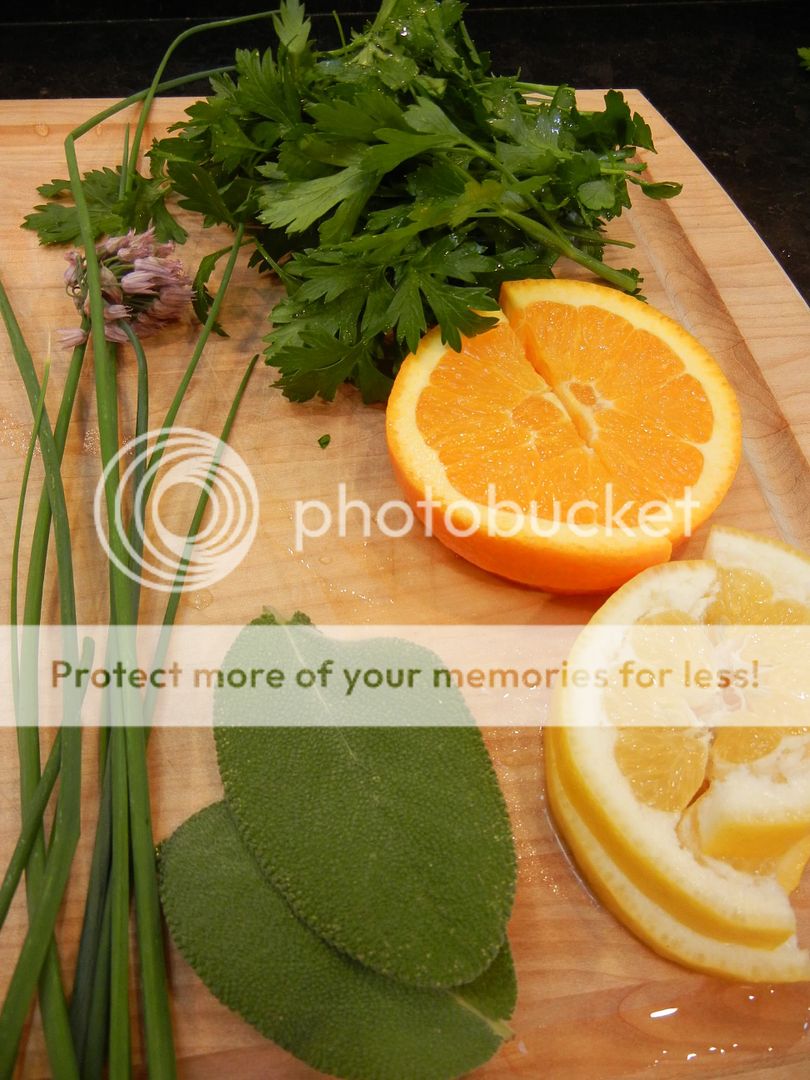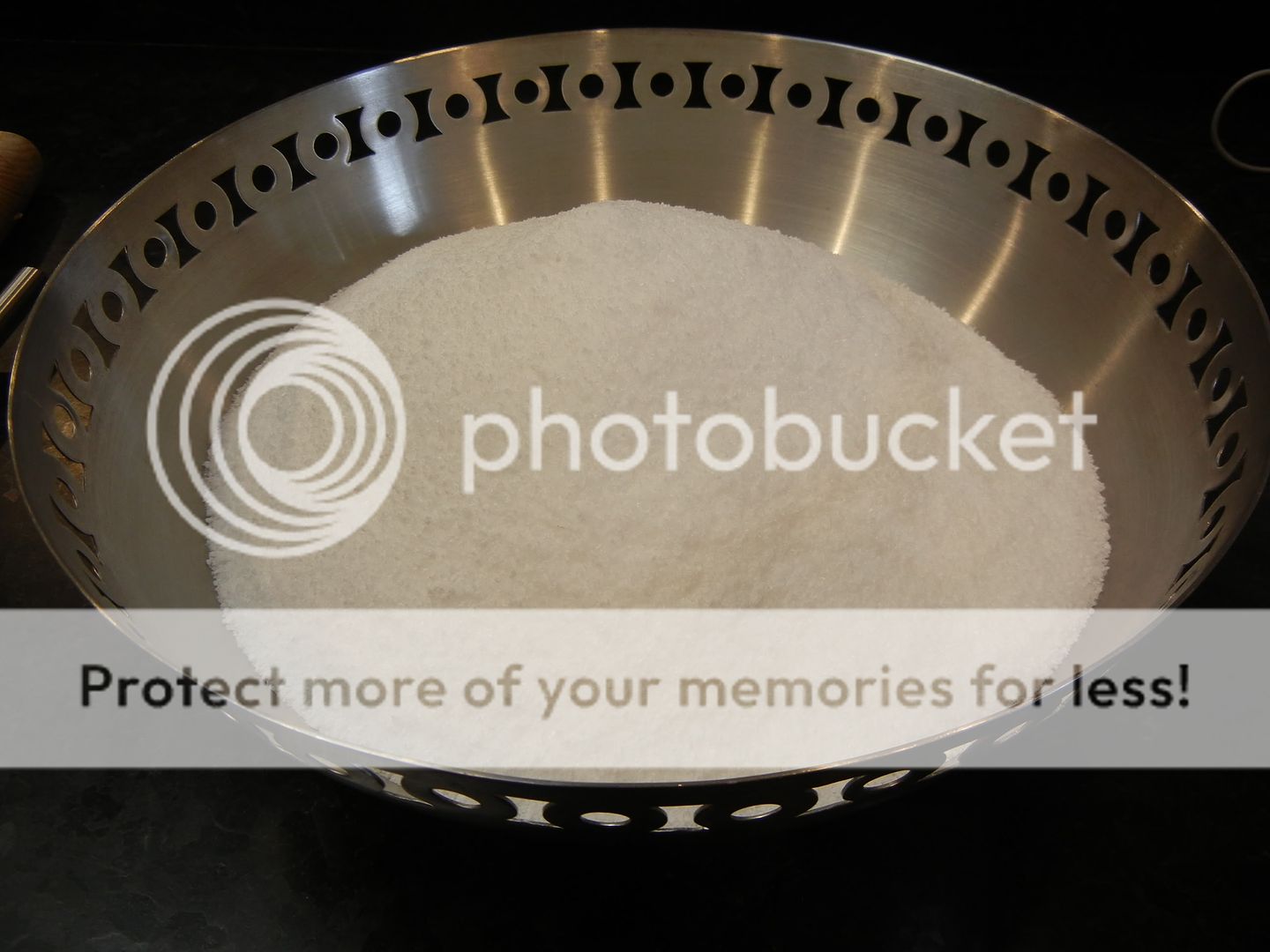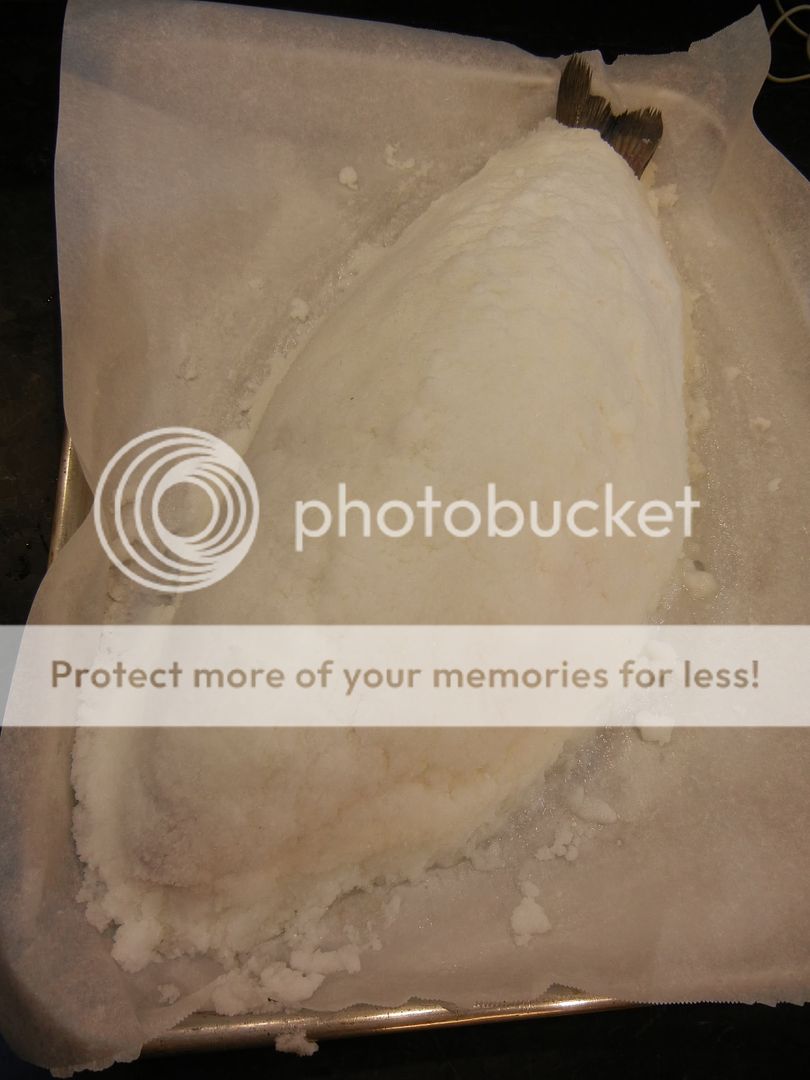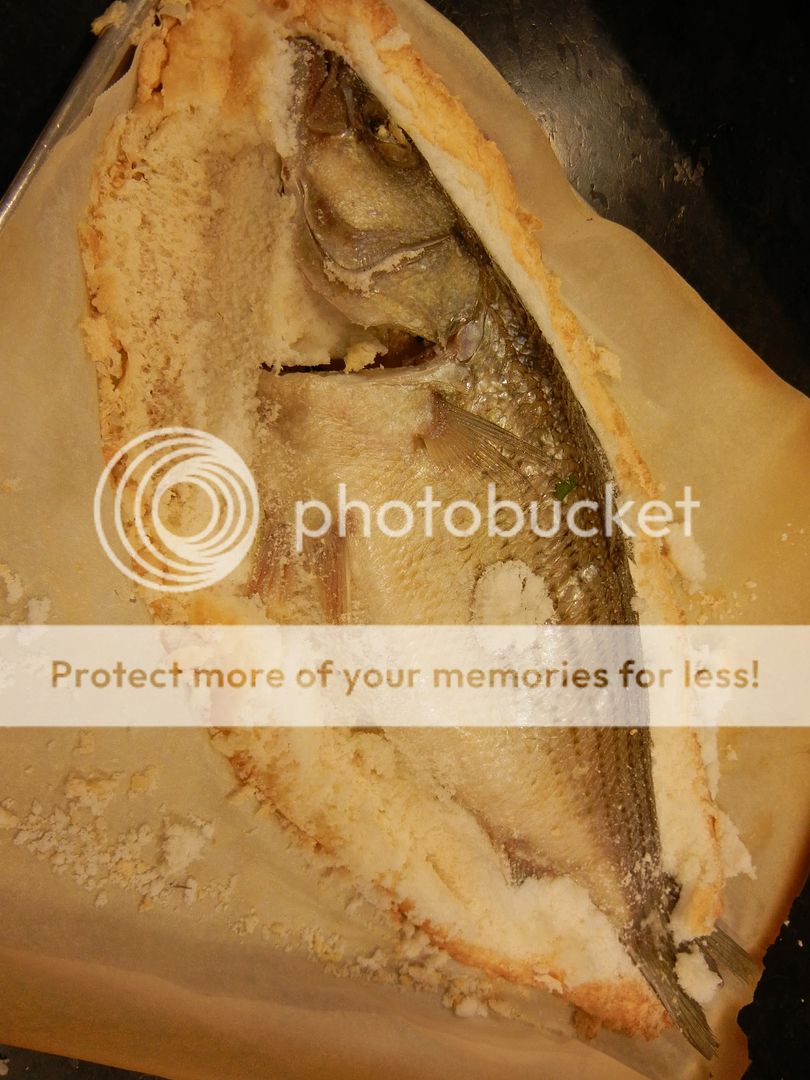This is a process I’ve used a number of times with great success but for some reason has slipped my mind as far as writing about. We're gonna cook a whole fish inside a massive pile of kosher salt. The process is fun, super effective for creating a moist and perfectly cooked whole fish and is assured to freak out any dinner guests you might have. Win-Win.
You are probably already thinking, “Holy Moses, that is going to be too salty!”. Well stop that right now. Believe me, it won’t. The salt simply creates a sealed environment in which to steam the fish in its own moisture. The salt sorta creates an oven inside an oven that allows a gentle application of heat to the fish, insulates it from the drying effect of the oven and keeps the aromatic ingredients from drying out as well. Again, don’t freak out. This is not going to turn a beautiful whole fish into a salt lick. This isn’t tough to do at all. If you’ve ever seen this done in a restaurant you know that it makes for an impressive presentation as the fish is exposed from its salt coffin. Upon opening you and your guest will find an incredibly moist, fragrant and perfectly cooked whole fish.
Here’s what you’ll need:
Hardware:
- Oven, preheated to 450deg
- Large double-layer sheet pan lined with parchment paper
- Large mixing bowl
- Large measuring cup
- Small hammer or heavy chefs knife
- Basting brush
- Pie server
Software:
- Good sized ocean fish
- Lemon
- Orange
- Italian Parsley
- Fennel tops
- Chives
- Sage
- 1-2 3lb boxes of kosher salt
- 6-8 egg whites
- Water
The first step is to find as fresh a fish as possible. Unfortunately, “fresh” in the fish industry simply means that the fish has never been frozen. It places no measurement whatsoever on how long the critter has been out of the water. A fish that was caught yesterday is “fresh” and technically, so is one that has been sitting on ice for 2wks. So how do you as a consumer tell the difference? Well the first step is to skip your local grocery chain and go to a fishmonger who sells a lot of fish. Turnover is the best defense against an old yet still technically “fresh” fish. The second is to actually look at and touch the fish. The eyes should be clear and bright not milky looking (deepwater fishes eyes may appear bloodshot, that’s normal, but milky = bad). Next pull open the gill plates and look at the gills, they should be nearly red – light pink or white is an old fish. Finally, feel and smell the fish. It shouldn’t feel slimy and the flesh should feel firm. Finally, if the fish smells like the sea it’s likely pretty recently taken. If it smells “fishy” skip it.
I prefer to use either a sea bass or striped bass for this process, but other high-fat fish like salmon or arctic char will work as well. They key is a high fat content, a simple skeletal structure and a thick skin. The process can also be used for poultry and game birds. I’ve never had chicken by this method, but I have had a whole duck, an Italian preparation known as “Anatra al Sale” and it was spectacular. Further, there is a variation that makes a dough using salt and flour that is used for meat. I’ve never used this method, but plan to soon and will write about it.
So, back to our fish…if you’ve got a good fishmonger have him/her gut and scale the fish for you, if not, get that messy task out of the way first. No need to trim off the head, tail or fins. In fact, it’s better that you don’t as it’ll make serving the fish easier and it’ll be more pleasing to the eye when you open the salt crust.
Get your oven preheated to 450deg.
Next, you’ll pour a bit more than a pound of kosher salt per pound of fish into a large mixing bowl. For a 3lb fish that’ll be a whole 3lb box of kosher salt plus about 1/2lb extra.
Then, separate about 6 egg whites and combine with about 2/3 cup of water. Whisk the egg whites and water together. No need to whip them though, just get them well mixed.
This next bit is fun…pour the egg white & water mixture into the bowl and use your hands to combine the two. Get in there and use your hands. Its fun and works best. You are looking for a consistency similar to wet sand. It should hold together well when you grab a handful and squeeze it together. If it’s still crumbly, add a bit more water or more salt if it’s too wet. It should look like this:
Once in the oven the protein in the egg whites will set and essentially cement the salt crystals together and seal up the mass which will trap inside the moisture and insulate the fish from the harsh oven environment.
Now get your sheet pan lined with parchment paper ready. You want to lay out a ¾” deep layer of the moist salt in the pan. No need to cover the entire pan, but give yourself about an inch or so beyond the outline of the fish. The salt should be uniform in thickness and well packed so there are no gaps or cracks. Then lay your fish on top of this layer of salt and fill the cavity with your aromatics like so:
Tuck the cavity closed as best as you can and begin covering the fish with a ¾” thick layer of the moist salt. Again, uniform in thickness and packed firmly. Don’t pound on it though as you don’t want to force the salt into the cavity of the fish. Just make sure the fish is covered completely. If the tail hangs out a bit as mine did here, don’t sweat it. I had extra salt…but ran out of eggs. No big deal. You won’t eat the tail. If you are running low on your salt mixture, it’s more important to cover the head than the tail. Once covered it should look like this:
Now pop the whole thing into the center rack of your preheated oven and set your timer for ~40min for a 3lb fish. After the time has elapsed stab it with an instant read thermometer and you should be at about 130 or so degrees. If it’s a little higher, no big deal because everything is nicely sealed up it’ll still be very moist. If your temp is low, pop it back in the oven for a while longer. When you pull it out, the crust will have turned a nice brown color like so:
At this point you have a choice to make. You can gently slide the whole thing, paper and all onto a platter and trim off the excess paper for opening at the table which is awesome if you have guests. If it’s just the family skip the theatrics and carve the fish in the kitchen. So how do we open this thing? Grab that small hammer (clean) or use the back of a heavy chefs knife and lightly tap around the salt pile roughly at the point where the ¾” deep bottom layer of salt meets the dome over the fish. Don’t wail away at the thing, you want to fracture the dome around the circumference not shatter it completely. The idea is to remove the dome from atop the fish, ideally in one complete chunk but if it comes off in two or three don’t sweat it. Once you remove the dome it’ll look like this:
Smells fantastic doesn’t it? Rich, fatty fish, fresh bright aromatics and the earthy aroma of the salt. What now you ask? Well, we’ve gotta serve this thing and there really isn’t a way to get the fish off the lower salt layer in one piece so we need to carve it in place. Use the basting brush to move away any errant chunks of salt. Then carefully pull away the dorsal, mid-dorsal and pectoral fins. Now carefully, using your pie server part the skin of the fish from the collar. The collar is the bony mass just aft of the gill opening. Gently work the tip of the server between the collar and the meat from the cavity opening to the backbone. Then use the tip of the server to pull up an edge of the skin. It should easily peel back to the tail and leave you with something like this:
Now, again, using your pie server remove individual servings from the body. Slide the server into the flesh, just above the backbone. Depending on the size of your fish you should get 2-4 servings from each flank. Once you have all the meat off of the exposed side then gently lift the tail, use the pie server to cut the skin and lift. The idea is to, using the tail, lift the skeleton off of the lower flank exposing that meat for serving.
I served the fish with a beautiful David Bruce Chardonnay, sauteed green beans from our garden and a lemongrass scented jasmine rice. Pretty darn fantastic meal for a Wednesday night and it took about an hour and fifteen minutes from start to serve.










Do you know how much drool you are responsible for laying all over my keyboard right now?
ReplyDelete